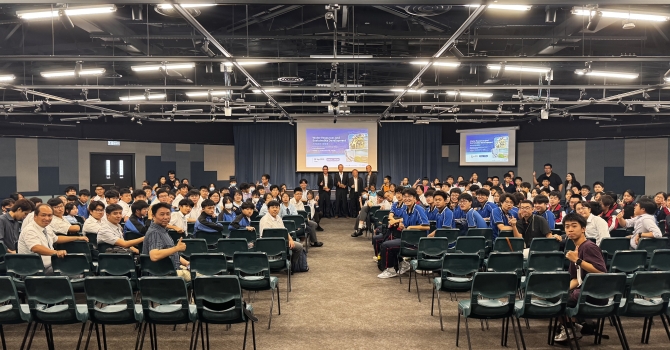HKUST Net-Zero Building Standards
New buildings have two carbon challenges: (1) how they can be constructed in ways that minimize the amount of carbon released during the construction process (also known as “embodied carbon”), and (2) how to design the buildings so that the minimize additional carbon emissions over the life of the building. Both of these challenges increase the footprint of the campus and make it more difficult to reach the net-zero targets.
Three Pronged Approach
The overarching strategy for new buildings is: All New Buildings Must Be Designed and Operated as Net-Zero Carbon Buildings. To ensure that all new buildings on the HKUST campus are carbon net zero throughout their lifespan, this Action Plan includes 3 action items:
1. Offset all embodied carbon from the design and construction process
2. Offset all operational carbon emissions from the operations of the new buildings
3. Implement cost recovery measures to ensure that carbon offset costs are fully funded through revenue from building-integrated renewables, or through service fees for the building occupants.
Specific strategies for minimizing these emissions are contained within the newly launched HKUST Net-Zero Carbon Building Standards. These strategies include a combination of high standards and requirements plus incentives for design teams to act aggressively in reducing carbon in new buildings. The Net-Zero building requirement comprises two elements (refer to Figure 3.3).
Offset Embodied Carbon from Construction
Utilizing the HKUST Net-Zero Building Standards (see Appendix 1), all stakeholders will be accountable for finding the least carbon intensive designs and material selections for the new building. During the construction stage, it is likely that new buildings will result in embodied carbon that must be counted and addressed as offsets. In these cases, overall amount of embodied carbon can be converted to cost using the carbon cost data table. These costs must be included in the capital budget and paid as a project fee. This provides an additional incentive for designers to reduce the embodied carbon as much as possible in order to preserve more funds for building features.
Embodied Carbon Performance Target:
The maximum amount of embodied carbon shall be 500 kg CO2e/m2 of Construction Floor Area for the superstructure portion (stages A1 to A3) as well as the construction process (stages A4 to A5). This is aligned with the latest new construction at HKUST.
Offset all Operational Carbon
The moment HKUST students and staff move into the new building, the emissions become operational. For the new building to be net-zero carbon over time, two things must happen; (1) the building should be generating as much carbon-free electricity as possible through the installation of renewable resources, and (2) any revenue generated by the renewable resources must be sufficient to cover the costs of purchasing approved carbon removal offsets. Ideally, these two measures will cover 100% of the carbon emissions, making the building a sustainable net-zero building over time.
Operational Performance Target:
GHG emissions from energy consumption must be offset by the revenue/avoided costs from building integrated zero carbon renewable energy production.
These standards set benchmarks for the minimum performance for all new capital projects and major existing building alterations and additions over 5000 square meters, and has been issued as part of our new Research Building 3 tender documents. An accompanying online contractor training modules will be available to contractors and suppliers to further explain its application.
Self Learning Online Module:
To facilitate the implementation of the standards, this is accompanied by an online training modules for our contractors and suppliers. The link also features useful calculators that HKUST created for calculating the life cycle and carbon offset costs. You can assess the online module here.
Click here to read the newly launched HKUST Net-Zero Carbon Building Standards.


